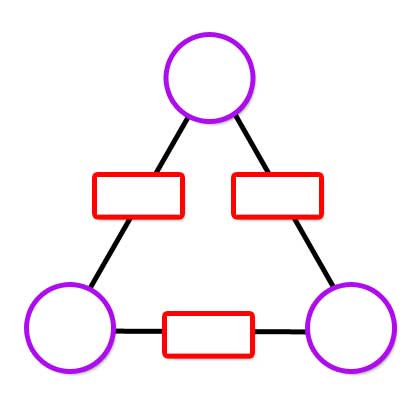Copyright © University of Cambridge. All rights reserved.
'Multiplication Arithmagons' printed from https://nrich.maths.org/
Show menu
Multiplication Arithmagons printable sheet
An arithmagon is a polygon with numbers at its vertices which determine the numbers written on its edges. An introduction to arithmagons can be found here.
Usually, we add the numbers at the vertices to find the numbers on the edges, but these arithmagons follow a different rule.
Can you work out how the values at the vertices determine the values on the edges in the arithmagons generated by the interactivity below?

If you are given the values on the edges, can you find a way to work out what values belong at the vertices? Use the interactivity below to test out your strategies. There are three different challenge levels to try.

Once you are confident that you can work out the values at the vertices efficiently, here are some questions you might like to consider:
- Can you describe a strategy to work out the values at the vertices irrespective of the values given for the edges?
- Is there a relationship between the product of the values at the vertices and the product of the values on the edges?
- What happens to the numbers at the vertices if you double (or treble, or quadruple...) one or more of the numbers on the edges?
- Can you create a multiplication arithmagon with fractions at some or all of the vertices and whole numbers on the edges?
Can you create a multiplication arithmagon where the numbers at the vertices are all irrational but the numbers on the edges are all rational?
What about where just one or two numbers at the vertices are irrational but the numbers on the edges are rational?